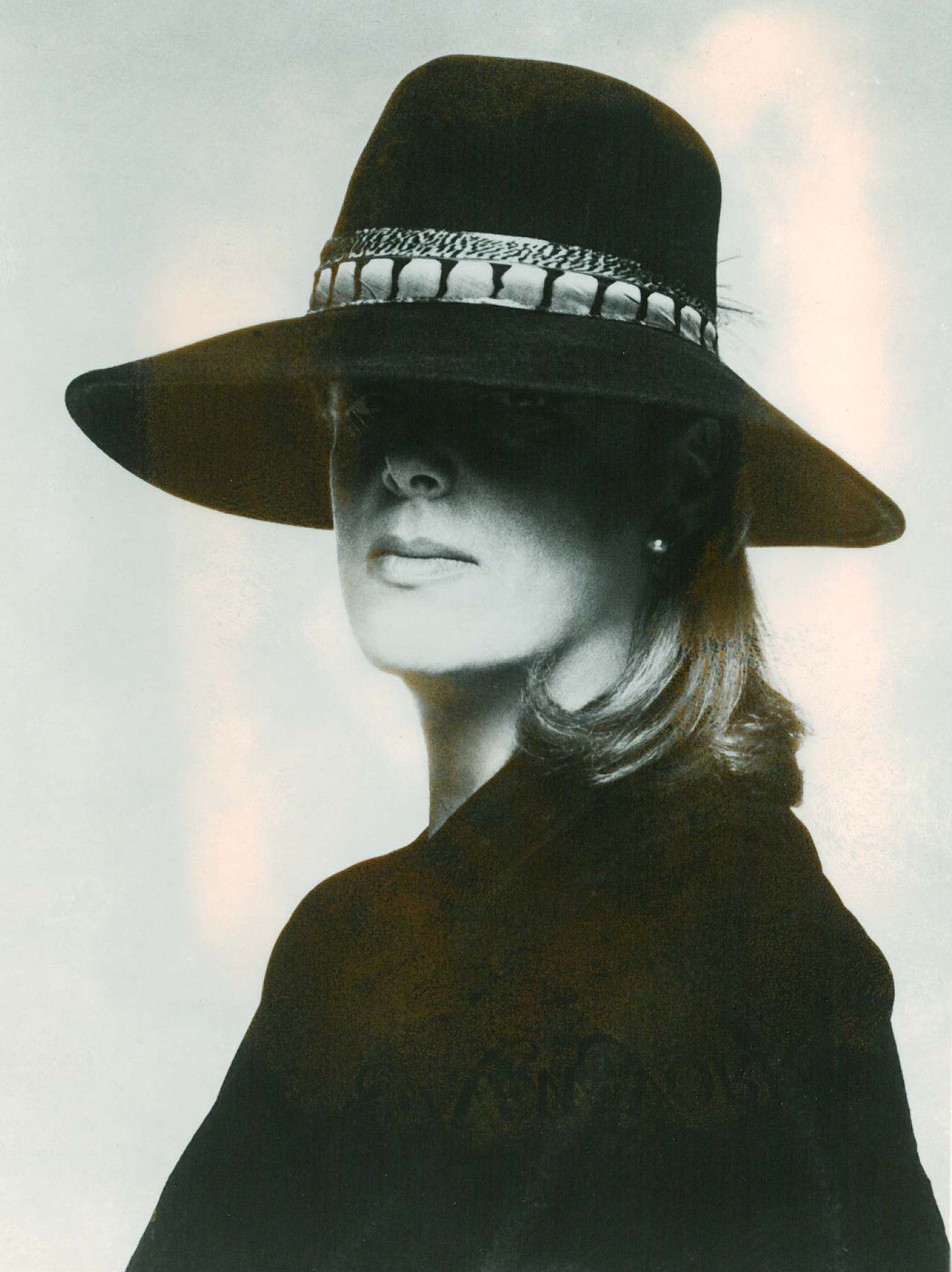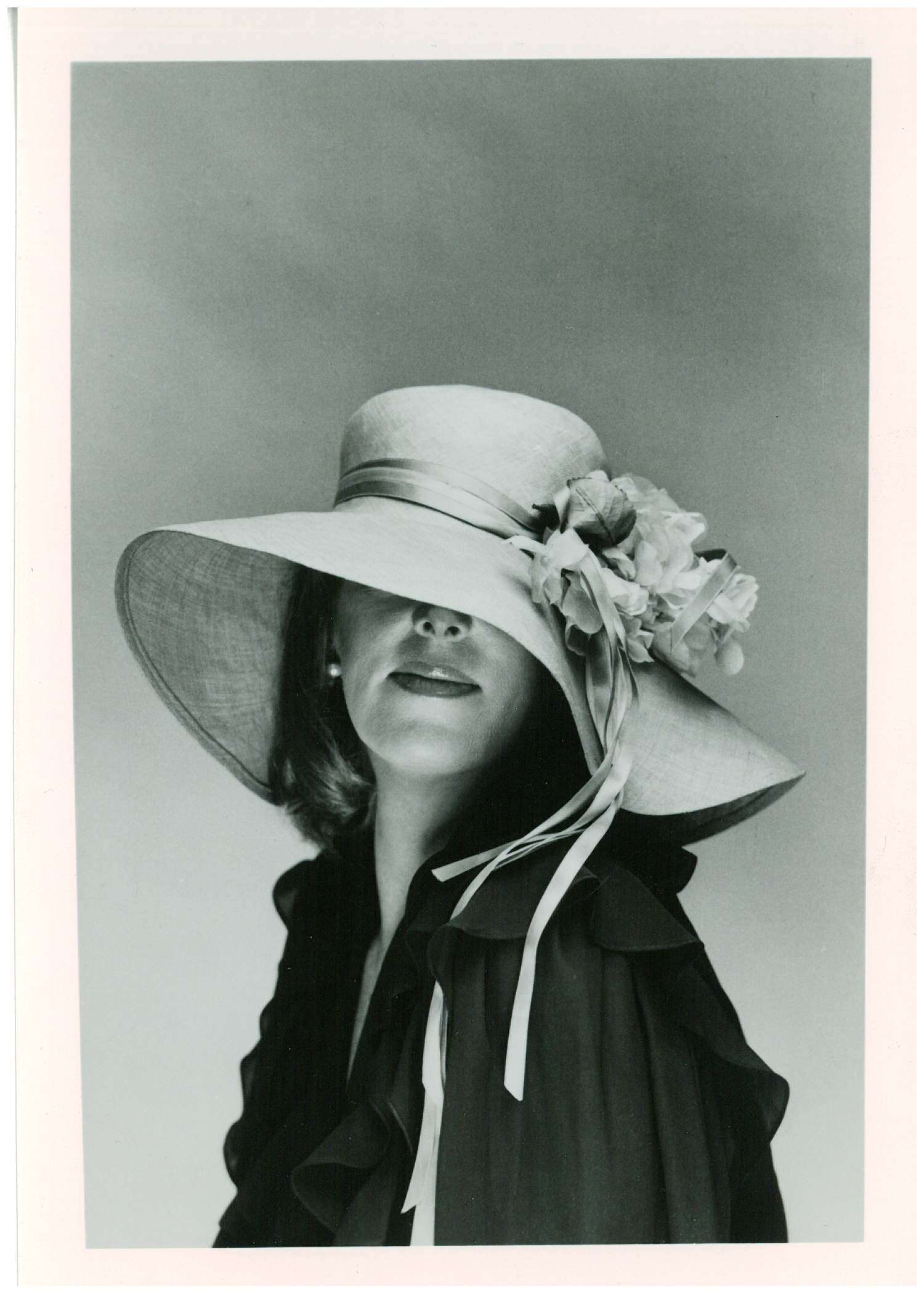February 11, 2008 |
BITE: My Journal
Dinner Begins at Forty
 |
The critic hides her face under a black sombrero: Photo: Dan Wynn
|
Time flies when you’re eating I guess. Suddenly when I’d lost count, New York magazine turned 40 years old and this is my 40th year as a restaurant critic. I seem to be the only survivor still on the staff from that year of launch, still reviewing restaurants after four decades. Am I stubborn or just hungry? Well, one does have to eat and even when I am off duty -- a quick burger at Fairway Café or a pizza at Celeste -- am I ever truly off-duty? All those critical antennae unfold when I walk into a restaurant. Click. Smells like butter. Click. No smile at the maitre d’ stand. Click. Who turned out the lights? Where is my headlamp? Is that music or static from a radio upstairs?
I remember when I was 40. It was definitely more fun being 40 than it is being a critic for 40 years Of course I lied about my age for so long, I don’t remember what was going on when I actually hit 40, only that New Yorkers were starting to fall in love with eating out – the magazine had a major role in suggesting that restaurants were power fields, theater and alcoves of seduction. Very young men were thrilled to join me for dinner and then boogie on Regine’s pulsating heart shaped floor till 2 or 3 in the morning. If you weren’t there it might be difficult to imagine the ecstatic years between the pill and the plague. Especially if sex and dancing happened to be your drugs and you could remember it all the next morning, As an early bloomer, I wouldn’t say life began at 40, but it certainly peaked…I wish the same for my colleagues at New York, great adventure and continued triumphs.
It’s true I decided I didn’t want to be the weekly critic at New York magazine several years ago. I didn’t want to spend every Monday morning of my life writing and rewriting and trying to defend my positions to editors who weren’t there at the dawn of our town’s cuisinary revelations.
But time passed and the short weekly column I still write wasn’t enough. I missed having the last word…I missed having the first word. And since I am eating out every night anyway, I thought I’d dip my forchette into a blog which grew into this on-line journal of confessions, gossip, recipes, travel memoir and hot addresses.
Growing up in a Velveeta cocoon in Detroit, Michigan, I never meant to be a restaurant critic. I didn’t hang out in a cozy kitchen like many of my peers, collecting sense memories etched with aromas of apple pie just out of the oven or peach jam simmering on the stove. Not much simmered. My mom, the loving auburn-haired Saralee mostly opened cans and jars or defrosted. So there was no childhood food dream or even a whisper of any sort of cooking fantasy when I arrived in New York as a lowly general assignment reporter ($105 a week) at the old New York Post.
If you came of age on Mr. Murdoch’s leering headlines, you may not even know there once was a bold, politically correct, fiercely liberal New York Post. I exposed bigotry on West End Avenue when Harry Belafonte tried to move in and conspiracies in Selma, Alabama. The Post covered the race beat before anyone. Al Aronowitz wrote a ten part series on the Beats and many chapters on the early days of Bob Dylan. Dylan looked a lot like Cate Blanchett when I joined him and Al for a coffee in the Village after work one afternoon.
Those were
 |
Soon the hat will be more famous than the face. Photo: Dan Wynn
|
the glory days of publisher Dorothy Schiff, editor Jimmy Wechsler and the great columnists: Murray Kempton, Max Lerner. I would love to read a Murray Kempton column on the
Post of today. His prose was uniquely lush and voluptuous, like a ripe Elberta peach or a hot fudge sundae. Occasionally I would try to sneak a Byzantine phrase into my own writing.
There in the city room, early one morning I met a slight, dark-haired new arrival on the desk. I was drawn to his sad brown eyes and appealing aquiline face. Don worked the night desk. I sat on the rim of rewrite by day. I was just one in a parade of first dates he wooed on a banquette at the Little Old Mansion, one of the era’s intimate small restaurants run by cranky old Southern belles. I’d never tasted anything as complex and transporting as her lobster with saffron rice and black walnuts. Soon Don and I were a folie á deux of rollicking foodies. And like any other early foodie (obsessed before foodie became an actual recognized Oxford Dictionary word), I lived by the Friday reviews in the New York Times of the great god Craig Claiborne.
Then came the fateful call in autumn of 1968. It was Clay Felker asking me to be the restaurant critic of his brand new New York magazine. It’s launch, designed by Milton Glaser, with print stars like Jimmy Breslin, Tom Wolfe, Gloria Steinem, Peter Maas and Barbara Goldsmith had the media world – which felt like all of New York -- buzzing.
Me a restaurant critic? I was freelancing at the time for Ladies Home Journal, McCall’s and Cosmopolitan. I wrote whatever they asked: The Secrets of the World’s Great Beauties. How America Lives. How Not to Get Dumped by Your Husband on his Way Up. Nothing foodie. I needed to sell restaurant stories so I could charge all our eating to some company’s expense account. And I had written a countdown to the re-opening of La Côte Basque for Felker when New York was the Sunday magazine of the late, lamented Herald Tribune, "Papa Soulé Loves You.”
I cooked. I took cooking classes. I’d tried to reproduce the gossamer pike quenelles I’d tasted at the Pavillon and the Café Chauveron’s ethereal mussels in Chablis and cream. DHF and I had made a pilgrimage to the mythic Chez Point on our belated honeymoon: We had emerged from an epiphany at the Restaurant de la Pyramide in Vienne, south of Lyon, smashed out on bliss and butter and vintage Hermitage, passionate converts to the truffled life. This struck me as a feeble credential against Claiborne’s stint on the G.I. Bill at the hotel school in Lausanne or his reign at the Times. What could Clay be thinking?
“What will you tell people are my credentials?” I asked.
“Aren’t you a food person,” he said.
“Well, I’ve eaten around.” I explained to Felker I could not possibly afford to write for the miserly $300 fee he was offering all writers – yes, even the stars – until the magazine broke even.
“But people are begging to be the restaurant critic of New York,” he said with an exasperated air, “So they can charge all their meals to us.”
There were flashing lights and a shock went through my body. What a concept. Quickly, before anything I had said could change his mind, I said “yes.” I got him to agree we would follow all of Craig’s rules: I would be anonymous, do a minimum of three meals and we would always pay.
“Yes,” he said. “And yes.”
I got a credit card using a borrowed name from American Express and then set about stewing over what I would write…what institution or brave new venture I would embrace or skewer first.
It was a convulsive moment in American. Fall, 1968. I stood in front of my closet trying to decide whether I would wear my fake polyester Yves St. Laurent pant suit from Ohrbach’s or the navy and white faux Givenchy. And two miles north of where I brooded Columbia University was paralyzed by student protests. Martin Luther King was dead. Bobby Kennedy was dead. The Democratic convention in Chicago had filled the television screen with scenes of uninmaginable violence. And yet here I was totally focused on the sociology and anthropology of New York dining, on Babe Paley’s neck and whether Sirio would give Onassis or Sinatra that prime table at the faded Colony.
I decided it would not be circumspect to rip into one of Craig’s favorites as my first act. So I didn’t move on La Caravelle or John Fairchild’s daily canteen, La Grenouille. I knew from reading Fairchild’s juicy Eye column in Women’s Wear Daily that CBS chairman William Paley had been obsessing about every detail of the design of the new restaurant in the lobby of the company’s sober new tower, the charcoal brown monolith known as Black Rock, “Paley’s Preserve,” my review of The Ground Floor, appeared November 11, 1968.
“The CBS Building is brown is beautiful is a sober monument to taste in the Manhattan grid of chrome, compromise and architecture by committee. Eero Saarinen drew it but the details became a family affair. CBS president Frank Stanton and board chairman William Paley fussed over glass tints and elevator buttons. When it came to the family kitchen, it was clear form the start, one could not install a Chock Full O’Nuts in the nave of the cathedral.
“Thus The Ground Floor is, above all, appropriately grand. It is slick, rich, calculated, spare, intimidating. It is Contemporary Wasp. You would hate to break open a roll for fear it would scatter unprogrammed crumbs. It is understatedly snob,,.The Ground Floor is a perfect room to end an affair in….”
I had found my voice. Click here to read more…
***
If you're feeling nostalgic, visit Vintage Articles to see early New York reviews: The Ground Floor, La Côte Basque: Quintessential Soulé Food, The Mafia Guide to Dining Out, La Caravelle: Insult á la Carte, Brooklyn, Come Hungry and more.
***